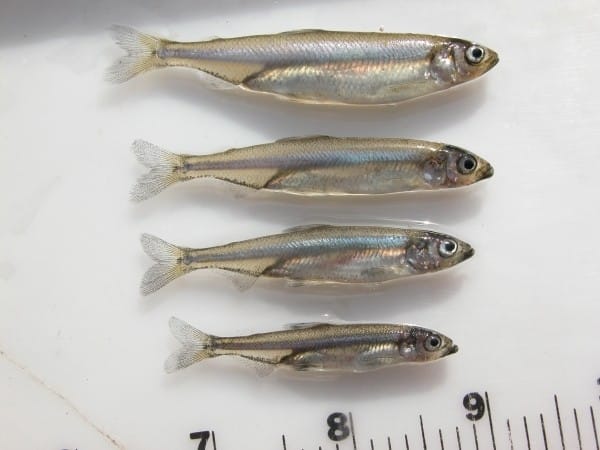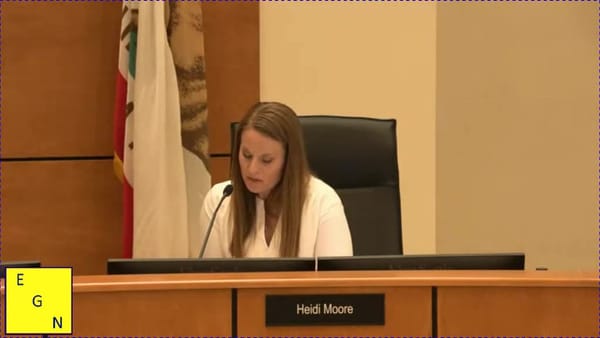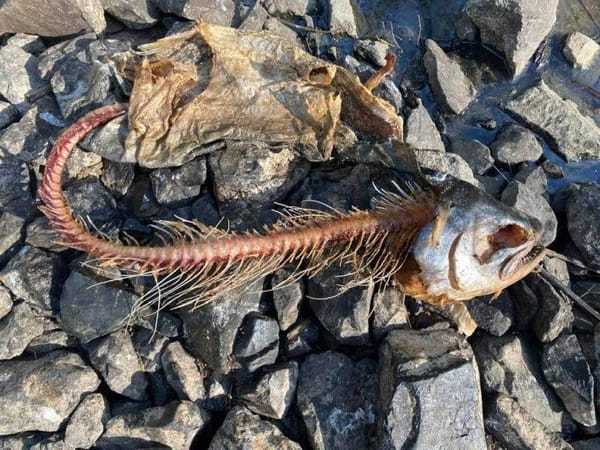It’s Final: No Delta Smelt Collected in CDFW Fall Midwater Trawl Survey for 6th Year

It’s final — For the sixth year in a row, no Delta Smelt have been collected in the California Department of Fish and Wildlife’s Fall Midwater Trawl (FMWT) Survey in the Sacramento-San Joaquin River Delta from September through December 2023.
Once the most abundant species in the entire estuary, the Delta Smelt has declined to the point that it has become virtually extinct in the wild, due to massive water diversions from the Delta to agribusiness oligarchs and water brokers, combined with toxics, water pollution and invasive species.
Disparaged as a “little minnow” by agribusiness oligarchs and right wing talking heads like Sean Hannity, the important role this fish plays in the ecosystem can’t be overemphasized.
”Delta Smelt are the thread that ties the Delta together with the river system,” said Caleen Sisk, Chief of the Winnemem Wintu Tribe. “We all should understand how that affects all the water systems in the state. They are the irreplaceable thread that holds the Delta system together with Chinook salmon.”
The 2 to 3 inch fish, found only in the Delta, is an “indicator species” that shows the relative health of the San Francisco Bay/Delta ecosystem. When no Delta Smelt are found in six years of a survey that has been conducted since 1967, the estuary is in a serious ecological crisis. The Delta smelt is listed as “endangered” under both the federal Endangered Species Act and the California Endangered Species Act.
“No Delta Smelt were collected at any stations from September through November,” according to Erin Chappell, Regional Manager, Bay Delta Region-3 to Brooke Jacobs, CDFW Branch Chief, and other CDFW staff on December 21. “The 2023 September- November index (0) is tied with 2016 and 2018-2022 as the lowest index in FMWT history.”
She said the absence of Delta Smelt catch in the FMWT is “consistent among other surveys in the estuary.” For example, the Enhanced Delta Smelt Monitoring (EDSM) survey of the U.S. Fish and Wildlife Service (USFWS) caught only 5 Delta Smelt among 10 sampling weeks (between 9/4 and 11/10) comprised of 1,360 tows (U.S. Fish and Wildlife Service 2023).
This memo, like a previous memo that preceded it, includes only information pertaining to Delta Smelt and Longfin Smelt. The full results of the survey through December with information on Striped Bass, Threadfin Shad, American Shad and Sacramento Splittail haven’t been posted yet. The CDFW has not given any indication of when that will be posted, but it will hopefully be soon: apps.wildlife.ca.gov/…
Since 2022, the Interagency Ecological Program (IEP), a consortium of nine member agencies, including three State departments and six Federal agencies, has experimentally reintroduced thousands of hatchery-raised Delta smelt from the UC Davis captive breeding facility in Byron back into the estuary. On December 21, 2023, the IEP reintroduced 6,261 Delta Smelt into the Sacramento River below Rio Vista.
The San Francisco Bay-Delta and Lodi Fish and Wildlife offices of the U.S. Fish and Wildlife Service and their partners have been working on a plan to begin releasing hatchery-raised Delta Smelt by 2024 to bolster the threatened fish’s wild population under terms of the 2019 biological opinion on the long-term operations of the federal Central Valley Project and the California State Water Project.
“One big step in support of supplementation by 2024 is experimental releases of relatively small numbers of hatchery-raised Delta Smelt into the wild, which began in December 2021. This will increase our knowledge about how best to carry out the releases logistically and will help us make any needed modifications to our plans before attempting larger releases,” the agency stated. More information: www.fws.gov/…
Longfin smelt population crash continues despite small increase
The Longfin Smelt population showed an increase from last year, although the population is still just a fraction of what it was before the State Water Project began pumping water south of the Delta in 1967. Between 1967, when the surveys first started, and 2020, the population has collapsed by 99.96%, according to the California Sportfishing Protection Alliance.
“The 2023 September-December Longfin Smelt (all ages) index (464) is a 14 percent increase from the previous year (the 2022 September-December index was 403; https://apps.wildlife.ca.gov/FMWT),” according to Chappell. “Four Longfin Smelt were collected at index stations in September for an index of six. In October, 52 were collected for an index of 79. In November, 77 were collected for an index of 203. In December, 86 were collected for an Index of 176 (Table 2). Six Longfin Smelt were collected at non-index stations during the four-monthly surveys.”
“The majority (greater than 92 percent) of Longfin Smelt caught in 2023 have been age-0 (Table 4). Cutoff lengths for age classes were assigned as described in Baxter (1999). Longfin Smelt catch was highest in September at Suisun Bay, highest in October at Suisun Bay, highest in November at San Pablo Bay, and highest in December at San Pablo Bay (Table 3). The Longfin Smelt index includes all ages,” Chappell stated.
This memo, like the previous memo that preceded it, includes only information pertaining to Delta Smelt and Longfin Smelt. The full results of the survey through December with information on Striped Bass, Threadfin Shad, American Shad and Sacramento Splittail haven’t been posted yet. The CDFW has not given any indication of when that will be posted, but it will hopefully be soon: apps.wildlife.ca.gov/…
On December 22, San Francisco Baykeeper filed a lawsuit against the US Fish and Wildlife Service for violating the Endangered Species Act (ESA) in its failure to issue a final rule on the petition to list the SF Bay-Delta population of Longfin Smelt (Spirinchus thaleichthys) as an endangered species. The agency’s proposal to list Longfin Smelt is the result of a series of petitions to and lawsuits against the agency, going back to 1992, according to the Baykeeper.
Collapse of Delta and Longfin Smelt is part of larger ecosystem decline
The near-extinction of Delta Smelt in the wild and the collapse of Longfin Smelt in the estuary is part of the larger Pelagic Organism Decline (POD) caused by massive water diversions from the Delta by the state and federal water projects, along with toxics, water pollution and invasive species.
Between 1967 and 2020, the state’s Fall Midwater Trawl abundance indices for striped bass, Delta smelt, longfin smelt, American shad, splittail and threadfin shad have declined by 99.7, 100, 99.96, 67.9, 100, and 95%, respectively, according to the California Sportfishing Protection Alliance.
Taken as five-year averages (1967-71 vs. 2016-20), the declines for striped bass, Delta smelt, longfin smelt, American shad, splittail and threadfin shad are 98.1, 99.8, 99.8, 26.2, 99.3 and 94.3 percent, respectively.
The collapse of pelagic fish species in the Delta occurs at the same time that Sacramento River salmon populations have declined dramatically. Recreational and commercial salmon fishing was closed this year on the ocean waters of California and most of Oregon and all recreational salmon fishing was closed on all California rivers this year, due to the collapse of fall-run Chinook populations on the Sacramento and Klamath Rivers: www.recordnet.com/…
Meanwhile, endangered winter-run and spring-run Chinook populations on the Sacramento River and its tributaries continue to move closer and closer to extinction, due to poor water and fishery management by the state and federal governments.
The Fall Midwater Trawl (FMWT), conducted since 1967 when the State Water Project went into operation, reports on the relative abundance and distribution of upper-estuary pelagic species including (but not limited to) Delta Smelt (Hypomesus transpacificus), Longfin Smelt (Spirinchus thaleichthys), age-0 Striped Bass (Morone saxatilis), Threadfin Shad (Dorosoma petenense), American Shad (Alosa sapidissima), and Splittail (Pogonichthys macrolepidotus).
The FMWT samples 130 stations each month from September to December, and those stations range from San Pablo Bay upstream to Stockton on the San Joaquin River, to near Hood on the Sacramento River, and into Cache Slough and through the Sacramento River Deep Water Ship Channel (SRDWSC).



